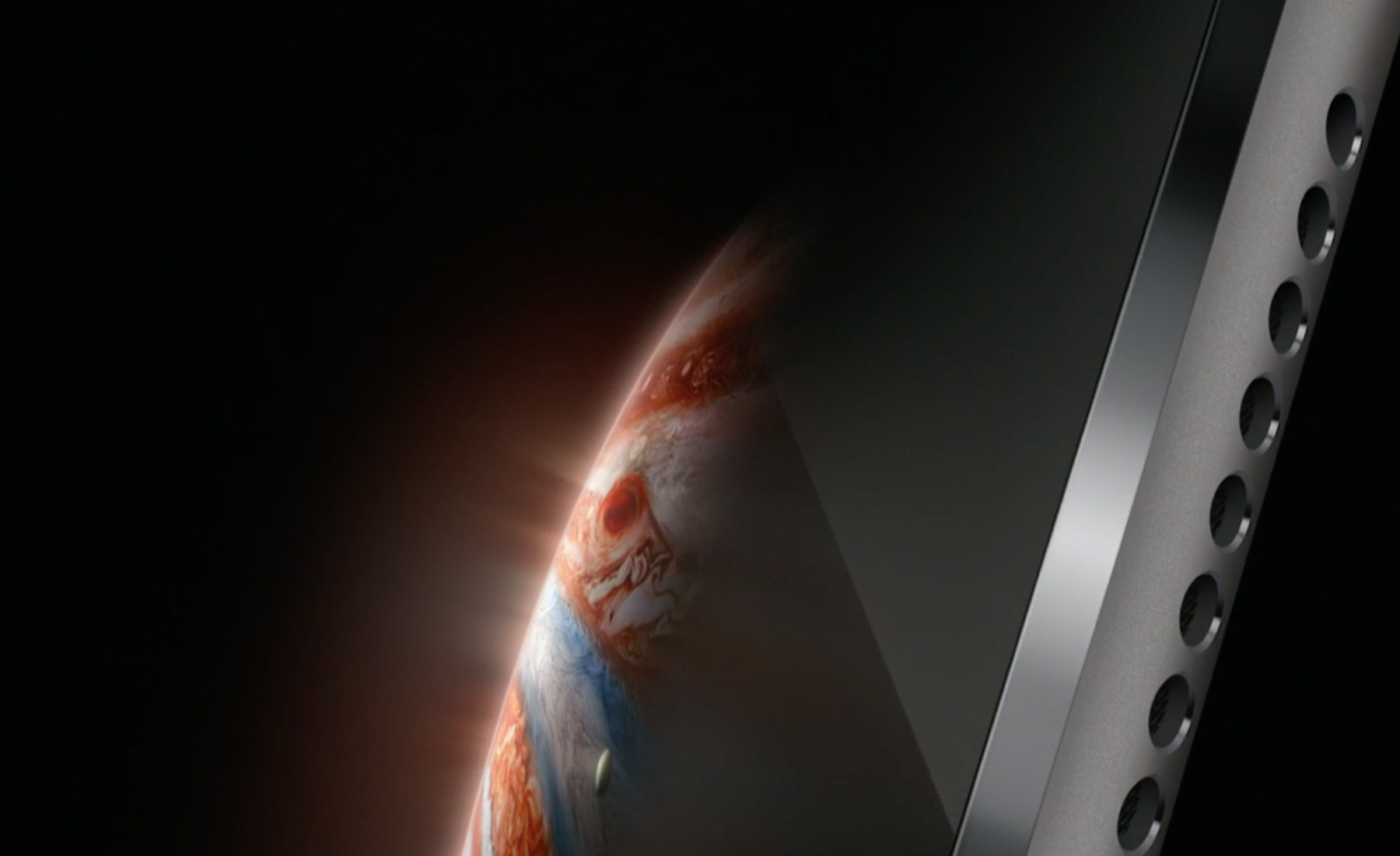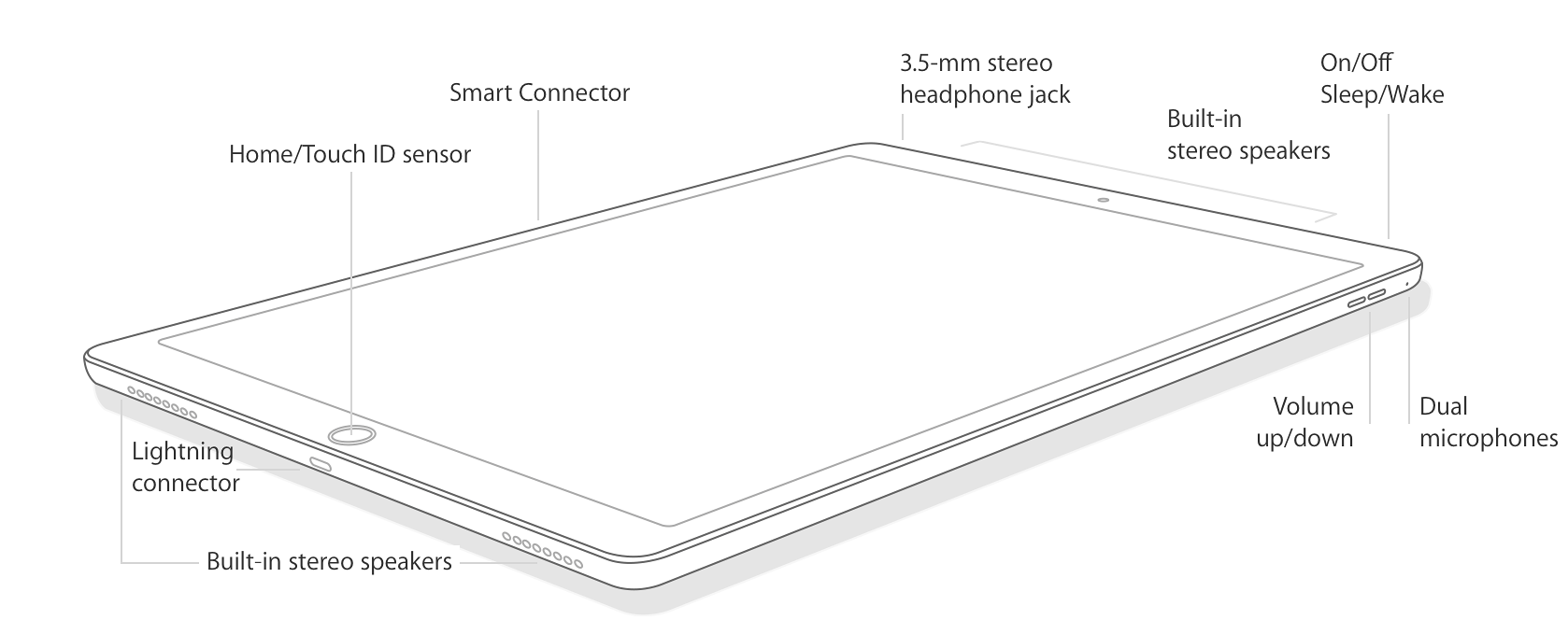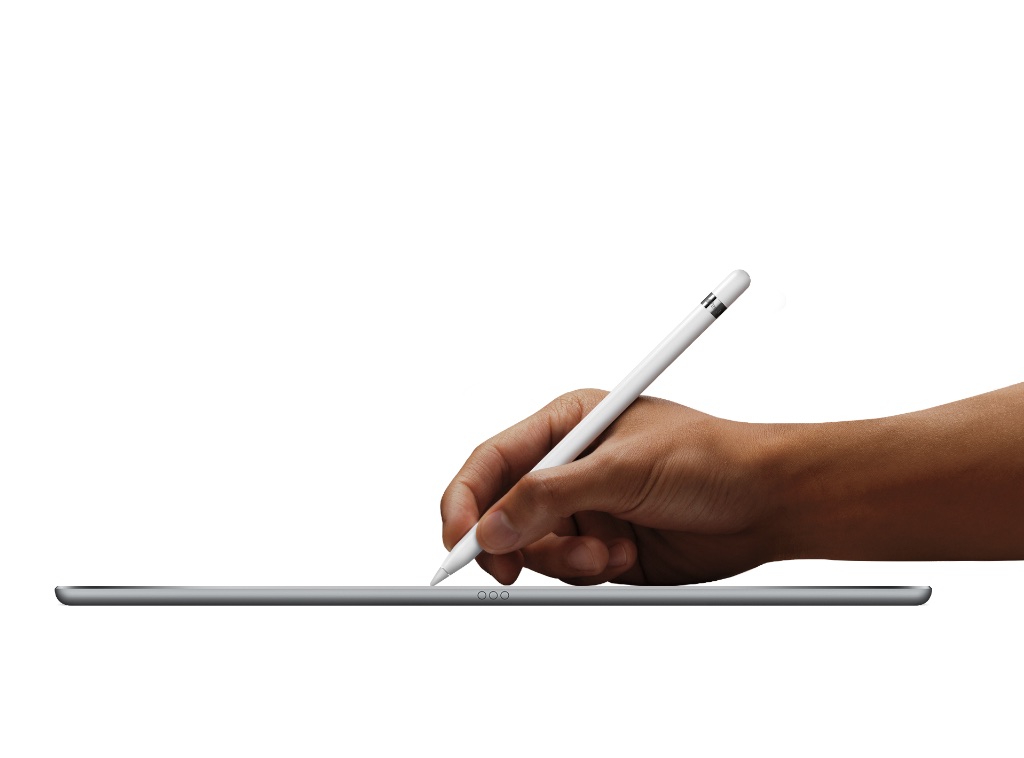|
By Graham K. Rogers

Several products were introduced or updated at Apple's event this week and with the complete absence of Macs, there was a sense that Apple was in the middle of redefining what computing is about. After the Apple Watch, Tim Cook returned to the stage and talked about the iPad, with Phil Schiller running the bulk of the introduction. Almost as an aside we discover there is a new iPad mini 4 too.
It is fairly common knowledge that Cook claims he does all his work on the iPad. This was first introduced in 2010 and at that time, despite the recent opening of the App Store, the potential had not been grasped, even by Apple. At the Developers' Conference in June this year, Phil Schiller made the comment in a video that this was so: what people began to do with the iPad, apps and iPhones caught Cupertino by surprise.
Cook referred to the iPad this week as a vision of personal computing: anything you want it to be. While some commentators have convinced themselves that the sales of tablet computers is declining, I sense that users hang on to these and the iPad (and iPad mini) has become far more of a personal device to many, unlike the iPhone which some users like to change as soon as the next version appears (I count myself among those).
Apple's CEO posed the question, How could these be taken further and a slide appeared with the caption, "The biggest news on iPad since the iPad". One of Apple's special videos was run, showing parts of the device, making it appear like something from space, with suitable music to match.
When Cook came onstage with the MacBook a while back, I thought it was an iPad with a lid. The long rumoured iPad Pro which he carried onstage, looked to me like a MacBook without the keyboard or screen. Everything is stuffed into the space behind the 12.9" Retina display.

Phil Schiller came on and he produced one of his expert product demos, focussing initially on the big screen and the extra performance, from the A9X processor which is 1.8 times faster than the A8X it supersedes.
The screen size more resembles a notebook computer: something that Microsoft tried to do with its desktop class Surface, and this is a clue to the target market. Enterprise users are clearly in Apple's sights after the link with IBM last year and the more recent arrangement with CISCO. There were some interesting other comparisons with the display size which is 2732 x 2048 pixels (5.6 MP): more pixels than the 15" MacBook Pro with Retina display. Of particular note is that the width of the screen is the same as the height of an iPad Air 2. That greater width allows the display of a full size keyboard.
Documents, photos and movies display beautifully, Schiller claimed, noting that the desktop-class performance from the A9X chip is faster than 80% of portable PCs shipped in the last 12 months. At graphics tasks, he said that it is faster than 90% of them and its battery has a 10-hour life: the same as the original iPad.
An unusual improvement was the sound system. Most users I know either live with the standard output, connect external speakers or listen via headphones. My choice is the Harman Kardon, Esquire Mini Bluetooth speaker and I am happy with that. Apple has now opted for improved sound output by the use of a 4-speaker system: one at each corner. This balances sound left and right (depending on how the iPad Pro is held) and has 3 times the volume of the iPad Air 2.
Apple has not penalised users with weight, despite the size and features: the original iPad was 1.54 pounds; the latest is 1.57 pounds (713 grams). The Wi-Fi + Cellular models are slightly heavier at 1.59 pounds or 723 grams.

With the size and intended audience, Apple has produced accessories for the device: a keyboard and case; and a stylus. The "Smart Keyboard" seems to have incorporated lessons from earlier keyboards and from Microsoft's Surface, although Apple did have a connecting keyboard as early as the Newton. The keys are similar to those developed for the MacBook so we may expect small travel, but reliable input.
A smart connector system on the side carries power to and data from the keyboard. This is price at $169 and should be available (at least in the USA) in November. An early look at the keyboard was put out by Jason Snell on MacWorld with some positive comments.
Drawing is one of the major uses of iPads and the iPad Pro allows new levels of precision. Predicted by many, the Apple Pencil is a sophisticated stylus that allows for variable input, depending on pressure and angle. It is charged by using a Lightning connector and inserting that into the port on the iPad Pro.
The device was introduced in one of those videos with a silky Jony Ive voice-over and an important point demonstrated in the video was the ability to use the stylus and the finger simultaneously.

iPad Pro and Apple Pencil - Image Courtesy of Apple
A number of commentators brought up the famous Steve Jobs quote about the stylus: if you see a stylus, they blew it. The problem with citing this is that when he made that comment, it was for a different class of device. The iPad has surprised even those at Apple. In a video released at the time of the last World Wide Developers Conference, Phil Schiller commented that the way developers had produced apps that were far above what Apple had initially thought possible, meant that the device itself had evolved into a different class.
There are of course several drawing apps: Brushes for the iPad appeared at the original iPad intro in 2010 and since then, many more have been released including Tayasui Sketches and Paper by 53, who produced their own Bluetooth stylus, also called Pencil. Other styluses have been developed and with the ways the device is being used, it is now more common for those users who prefer drawing apps - technical or art - to want a stylus. Apple has responded to the changed situation: an evolution, not going back on previously held ideas.
Some were so keen to prove Apple wrong (again) that this anti-stylus stance was rolled out by several commentators. One who got it totally wrong was Chris Taylor on Mashable who wrote, "When launching the iPad in 2010, Jobs declared that "if you see a stylus" on tablets, you know that the tablet makers "blew it.""

I was at the 2007 iPhone introduction which is where Jobs made that observation, but just to check, I reran the 2010 iPad introduction video. Nope. This use of the comment on use of styluses with devices, misrepresents what Apple is trying to do with the new, larger version. Apple changes direction as and when necessary: the stylus will suit many users.
I also saw a Bloomberg article (Leonid Bershidsky) pointing out weaknesses in the iPad Pro and iPhone strategies that cited 2011 for the release of the original iPad: it was announced 28 January 2010 and WiFi versions were released 60 days later. It doesn't take much to check the basic facts.
If the use of the stylus was not enough evidence of changed thinking at Apple, the demos that followed the video indicate a major shift has now occurred: and not only at Apple.
Demo 1 - Microsoft
When Steve Jobs returned to Apple and had to be bailed out by Microsoft, the reception of a video-linked Bill Gates at MacWorld was decidedly unfriendly. Kirk Koenigsbauer came on stage to a respectable applause and left with a firm endorsement. Both Apple and Microsoft (under its new CEO Sataya Nadela) are in a changed world and both complement each others' products.
Redmond has released several apps for iOS devices in the last year or so, and this demo showed off a new version of Office for the iPad indicating good levels of inter-company cooperation - perhaps as important as the iPad Pro itself.
The Demo made excellent use of iOS 9 multitasking with apps open onscreen, like Word and Excel, Excel and PowerPoint, and dragging data from one to the other easily, building documents quickly and easily. The applause as the demo ended showed how flexible the companies' products could be when working together.

Demo 2 - Adobe
Another company that may not be on everyone's favourites list is Adobe, although this is mainly because of its Flash product which many users have now dropped entirely. As for the other software, particularly the important Photoshop, this is used by many professionals and produces first-rate output. I prefer not to install Photoshop (or other Adobe products) as I do not need the multiple features that it allows. I manage with a number of other applications - on Mac and iOS devices - without the need for such big (and expensive) applications. Those who really need them, really need them.
Adobe is an important player and like Microsoft it was signifiant to see the cooperation with Apple on the iPad Pro. Eric Snowden, Adobe's Director of Mobile Design came on stage to demonstrate some new applications. Adobe already have a number of iOS apps, indicating the importance of the device to them; but here was something new and, like Microsoft, Adobe was taking full advantage of the new features in iOS 9. And the Apple Pencil.
He demonstrated Adobe Comp, which appeared initially to be a simple drawing tool, but the basic input was quickly developed into a desktop publishing document. With multitasking, he was able to switch to Photoshop Fix (a new app, announced that day) and change the expression on a photo he was using in the first document. The ease with which this was done was appreciated by the audience.
More impressive however was the ability to scroll back through history, right the way back to the original blank screen. He also brought in Photoshop Sketch that allowed some fine-tuning to be made to drawings in that original production. This also used some of the features of the Apple Pencil in drawing and editing of an image. The apps are only available for the iPad Pro and are shipping in October.

Demo 3 - 3D for Medical
Irene Walsh introduced an app for visualising medical images, with the intent to allow doctors to be able to explain and share with patients. Walsh showed how it allows bones, muscles and movement - activated at 60 fps - to be displayed in real-time. The Apple Pencil can cut through the image and show an injury in 3D.

The iPad Pro has an 8MP camera (the iPhone 6S also introduced at this event now has a 12 MP camera); 802.11ac WiFi with MIMO (multiple input, multiple output); up to 150 Mbps LTE; and Touch ID. It is available in Gold, Silver and space Gray. Price for the 32 GB WiFi-only version is $799; for 128 GB WiFi-only - $949; and for the 128 GB WiFi + LTE - $1049.
Calculating the prices here is not easy with currency fluctuations, but $799 with VAT of 7% comes to 28,931 baht; $949 with 7% added is 36,657 baht. I would anticipate prices to be realistically around 29,000 and 37,000 baht for the WiFi-only versions.
In his summarising comments, Schiller reprised the iPad line, starting with the iPad mini 2 ($299) and almost as an aside mentioned that there was now also the iPad mini 4 ($399) which has the same power as the iPad Air 2 in the smaller form factor. The iPad Air is also $399, while the iPad Air 2 starts at $499, with the basic iPad Pro at $799.
See also:
Cassandra: Apple Event (1) - Apple Watch and Watch OS 2
Cassandra: Apple Event (3) - Apple TV: Good in Certain Areas Perhaps
Cassandra: Apple Event (4) - iPhone 6s and iPhone 6s Plus: Desirable
Cassandra: Series 7000 Aluminum in iPhone 6 and iPhone 6s
Graham K. Rogers teaches at the Faculty of Engineering, Mahidol University in Thailand. He wrote in the Bangkok Post, Database supplement on IT subjects. For the last seven years of Database he wrote a column on Apple and Macs. He is now continuing that in the Bangkok Post supplement, Life.
|









